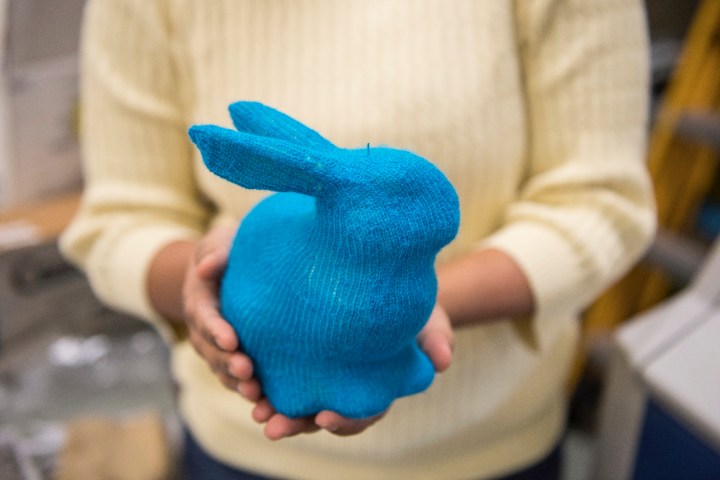
When people talk about those most likely to lose their jobs to automation, chances are that grannies aren’t the first people who come to mind. But knitting needle-wielding grannies, busy churning out tiny knitted jumpers for their grandchildren, could soon find themselves at risk of techno-replacement thanks to new research coming out of Carnegie Mellon University’s Textiles Lab.
Computer scientists there have developed software that’s able to transform 3D models into stitch-by-stitch knitting instruction for V-bed automated knitting machines. The result is a system that could one day take any 3D scan of an object and transform it into a knitted object, with minimal human intervention.
“A 3D model usually consists as a set of points and encodes how they are connected to represent a shape,” Vidya Narayanan, a doctoral student working on the project, told Digital Trends. “Knitting machines cannot directly work with such an input. A knitting machine consists of hundreds of needles on which loops or stitches can be created and moved around. The input to such a machine needs to specify exactly where stitches or loops must be added and how they must be moved.”

Carnegie Mellon’s system works by taking a 3D model as its input, and then computes the necessary stitches and their connectivity so that the shape can be replicated through knitting. After this, it works out the order in which loops must be generated, assigns needle locations for each loop, and calculates the necessary instructions to ensure the finished structure looks as intended. And you thought making a car drive autonomously was complex!
For now, though, it seems that granny may be safe from total replacement. That’s because, while the tech is certainly impressive, there is still room for improvement.
“Noticeably, this version of our system only generates stockinette patterns, and does not support textures or patterns,” Narayanan continued. “But it is indeed possible to generate knit objects with interesting patterns such as laces and cables, as well as color work. This also calls for ways to encode aesthetic considerations and provide more user control in the pattern generation process.
“Secondly, our project was focused on the geometry — getting the shape right. Modeling yarn stress is also important for functionality. Soft knit objects can deform in unintuitive ways, simulations will go a long way in making better design tools for such systems. We are now looking at understanding and solving these problems.”


